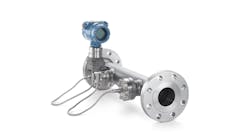Bio-Microbics, Inc., a manufacturer of decentralized wastewater treatment technologies, is the first company to earn NSF/ANSI 350 certification for the Bio-Barrier membrane bioreactor (MBR), according to NSF. NSF scientists conducted an evaluation spanning more than six months of continuous operation of the Bio-Microbics Bio-Barrier MBR treatment system at one of NSF”s approved wastewater testing facilities.
NSF/ANSI 350 was developed over a four-year period, in an ANSI-accredited consensus process involving representation from industry manufacturers, public health officials, and product users.
As one of the first systems to comply with applicable standards, the goal of Bio-Microbics with the BioBarrier MBR System is to use decentralized treatment technology for the benefit of water-reuse projects that reduce fresh water consumption and minimize effluent discharge. Integrated systems with reuse opportunities contribute more to water savings, according to Bio-Microbics and NSF. These savings are significant over time as water recycles through the system, allowing for less dependence on potable water sources.
Certification to the new NSF/ANSI 350 satisfies requirements for leading green building programs including USGBC LEED (Leadership in Energy and Environmental Design) for Homes (2008) Water Efficiency credit for graywater reuse systems. Products certified to the NSF/ANSI 350, also could satisfy gray water use strategies under the National Association of Home Builders (NAHB) National Green Building Certification program as an innovative practice.
According to NSF, it has developed the only American national standard for evaluating onsite water reuse technologies to ensure they properly treat graywater (i.e. wastewater generated from activities such as laundry and bathing) and combined wastewater (i.e. all sources of wastewater generated within a residence or building) for reuse in non-potable applications.
NSF/ANSI Standard 350 establishes materials, design and construction, and performance requirements for onsite residential and commercial reuse treatment systems and sets water quality requirements for the reduction of chemical and microbiological contaminants for non-potable water use. Treated wastewater (i.e., treated effluent) can be used for restricted indoor water use and outdoor unrestricted water use.

